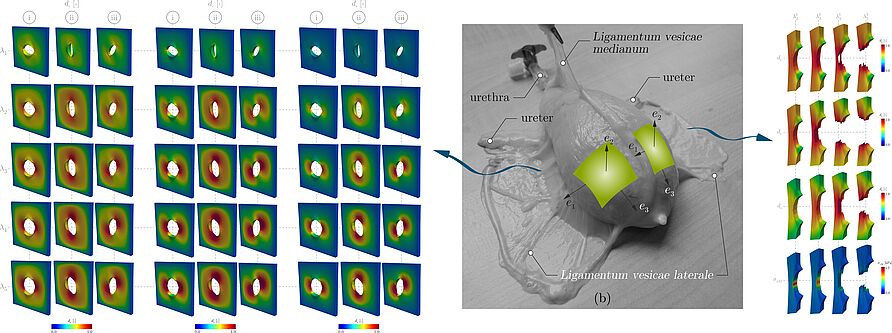Smooth muscle tissue is an important component of the involuntary muscle in hollow organs. Its ability to undergo extensive deformation while maintaining mechanical integrity is crucial for ensuring various functional activities of these organs. The functionality of smooth muscle tissue is determined by its major components, including elastin, collagen, and smooth muscle cells, which exhibit different mechanical properties, orientations and compositions within the tissue. In order to treat pathological conditions associated with smooth muscle tissue fracture, it is necessary to understand the failure behaviour of the individual components. This study proposes a three-dimensional multi-phase field model to investigate the fracture behaviour of smooth muscle tissue. The damage (failure) mechanism of each component is described by individual phase field descriptors. Furthermore, the model considers the anisotropic nature of fibrous components in elastic and fracture behaviour, as well as the different compositions within smooth muscle tissue. To demonstrate the applicability of the model, numerical simulations are performed on tissue strips, including uniaxial and biaxial testing. Additionally, the impact of varying fracture-related material properties and geometric configurations (notch orientations) is analysed to demonstrate the model's ability to simulate fractures under diverse physiological and pathological conditions of smooth muscle tissue.
R. H. Deo, J. Liu, T. Siebert, M. Böl
Multi-phase field approach for modelling fracture propagation in multi-component tissues
Journal of the Mechanics and Physics of Solids, 106399, (2026) [Link]

